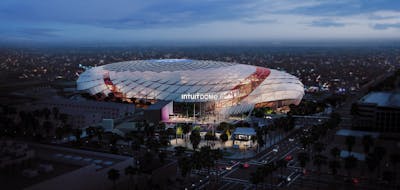
This article by Rachel Calafell originally appeared on the Texas Civil Engineer website.
Overview
Not long ago when a new building was designed in an urban environment, one of the first steps in the construction process was to clear the proposed site of any existing structures in order to prepare for the new structure. Increasingly, designers and engineers are moving away from this strategy in favor of repurposing an existing structure.
One advantage of this strategy is the reduction of embodied carbon, which not only saves the emissions associated with extracting and installing new materials, but also reduces the waste produced during demolition.
This was the approach in 2017 when the Rice Management Company, stewards of the Rice University endowment, purchased the remaining years of a 99-year ground lease for the Sears department store in Houston’s Midtown. The plan was to redevelop the building into a 266,000-square foot anchor for Houston’s Ion District.
The redeveloped structure, known as The Ion, was designed to support businesses at all stages of the innovation life cycle and provide resources for Houstonians seeking to participate in the local innovation economy. However, the project presented a bevy of engineering challenges during its transformation and expansion from a retail space to a collaborative technology innovation hub for Houston’s entrepreneurial, corporate, and academic communities.
The challenges included a vertical expansion by two floors, a horizontal expansion to increase the structure’s floor space as well as the additions of a new canopy, rooftop terraces, a light well to allow daylight inside the structure, and a glass curtainwall.
“A major challenge of the original building is that it was a dark box,” says Dennis Wittry, senior principal at Walter P Moore. “To make the building inviting to commercial tenants, bringing daylight into the space was critical. The original scope of work anticipated using punched windows, bringing nominal daylight into the space while minimizing demolition of the exterior concrete walls that were serving as the primary lateral system for the building.”
The final solution involved a more significant extent of demolition both on the building exterior and interior, as well as the creation of a light well running through the center of each floor of the building.
The Ion, which completed construction in 2021, retains many features of the original structure including angular corners, glass-block windows, decorative tiles, and a three-sided storefront that opens to the streetscape.


